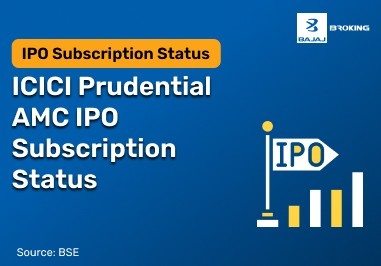What is Supply and Demand in Trading?
Supply and demand in trading is an economic principle that outlines the relationship between the availability of a financial asset and its demand. Supply and demand zones on price charts indicate areas where prices may face support or resistance. When demand exceeds supply, prices generally rise, while prices fall when supply surpasses demand. Understanding these concepts helps traders predict market movements and make informed decisions. Key aspects include supply and demand trading curves and factors affecting stock supply such as buybacks and new shares.
No matter if you’re examining significant price turning points, observing patterns in the market, or exploring support and resistance areas, the heart of supply and demand trading consistently takes the spotlight within these concepts. During a robust uptrend, the dominance of buyers over sellers becomes the driving force behind maintaining momentum. This fundamental truth is straightforward—when in an upward trend, prices keep rising until an influx of sellers emerges, countering the prevailing buy orders. The foundation of strong bullish trends is rooted in what we call an accumulation zone or a demand zone.
Conversely, bearish trends come into play when the number of sellers surpasses the volume of buy orders. As a result, prices decline until a balance is restored, and buyers regain their interest. The beginning of a downward-moving bearish trend is recognised as a distribution zone or a supply zone.
Different Types of Supply and Demand Formations
In supply and demand trading, various formations help traders identify potential market movements. These formations can be broadly categorised into reversal patterns and continuation patterns, each providing insights into possible price trends.
Reversal patterns
Down-base-rally: This formation indicates a potential reversal from a downtrend to an uptrend. The pattern begins with a price drop, followed by a consolidation phase known as the base. After this period of stability, the price then rallies upward, signalling a shift in market sentiment and attracting buyers. The supply and demand zones here reflect a shift from selling to buying pressure.
Rally-base-drop: In contrast, this pattern suggests a reversal from an uptrend to a downtrend. It starts with a price rally, followed by a base formation through consolidation. Subsequently, the price drops significantly, indicating a change in market sentiment and drawing in sellers. This supply and demand trading pattern highlights a transition from buying to selling pressure.
Continuation patterns
Drop-base-drop: This pattern signifies the continuation of a prevailing downtrend. The price first drops, forms a base through consolidation and then resumes its downward movement with increased strength. It reflects ongoing selling pressure within the supply and demand zones, suggesting a persistent bearish trend.
Rally-base-rally: Conversely, this formation indicates that an existing uptrend is likely to continue. The price rallies upward, consolidates to form a base and then continues its upward trajectory. This pattern reflects sustained buying pressure and positive sentiment in the market, reinforcing the current uptrend.
Understanding these supply and demand in trading patterns can enhance trading strategies by identifying potential price reversals or continuations based on market sentiment and supply and demand zones.
Example of Supply and Demand Trading
Imagine you’re at a local market where vendors are selling fruits. When there’s an abundance of one fruit, its price drops because there’s more of it than people want to buy. But when the fruit is rare and many people want it, the price goes up. This same principle applies in trading.
Supply and demand trading is about spotting areas where there’s either too much of something (supply) or not enough (demand). These areas act like magnets, pulling prices toward them. Traders use these spots to predict where prices might change.
How Supply and Demand Influence Market Prices?
Supply and demand in trading is an economic principle that outlines the relationship between the availability of a financial asset and its demand. Supply and demand zones on price charts indicate areas where prices may face support or resistance. When demand exceeds supply, prices generally rise, while prices fall when supply surpasses demand. Understanding these concepts helps traders predict market movements and make informed decisions. Key aspects include supply and demand trading curves and factors affecting stock supply such as buybacks and new shares.
Understanding Supply and Demand Zones
Supply and demand zones are sections on a price chart where the price has shown significant changes before. A supply zone is where many people wanted to sell, causing the price to fall. A demand zone is where many people wanted to buy, causing the price to rise.
To find these zones, you need to identify places where the price changed direction in the past. It’s like recognising patterns in how the market behaves. These zones aren’t exact lines, but more like regions where the market tends to change its mind.
What Do Trading Supply and Demand Zones Imply?
Understanding trading supply and demand zones is similar n to having a treasure map for the market. Imagine supply zones as caution signs, indicating more sellers than buyers at a certain price. This surplus of sellers suggests potential price drops due to selling pressure. On the flip side, demand zones act as guiding lights, indicating a surplus of buyers. This abundance of buyers can drive prices up as demand increases.
Think of these zones as road signs guiding traders through market journeys. Just as a stop sign prompts drivers to halt, supply and demand zones indicate potential price shifts. Embracing these concepts empowers both new and seasoned traders with insights into market behaviour.
Incorporating these zones into your trading approach is like equipping yourself with valuable insights. It’s about identifying critical points where the balance between supply and demand might tip. By acknowledging these zones, you gain a clearer understanding of potential price movements, enhancing your decision-making abilities and improving your trade navigation skills.
Comparing Demand and Supply with Support and Resistance
Supply and demand zones are similar to support and resistance levels. Support prevents prices from dropping too much, while resistance halts prices from rising too high. Supply zones act as resistance, and demand zones act as support. These concepts complement each other, helping you anticipate potential price shifts and make informed trading choices.
Significance of Supply and Demand Zones: Key Considerations
- Price Reversals: These zones often mark places where the price changes direction. When the price approaches these zones, it could reverse its movement.
- Support and Resistance: Supply and demand zones are closely connected to support (where the price stops falling) and resistance (where the price stops rising) levels.
- Zone Strength: Not all zones are equally strong. Some have a greater historical impact and are more likely to influence price reversals.
- Timeframes Matter: Identifying supply and demand zones on different timeframes can provide a better understanding of their significance.
Tips for Effective Supply and Demand Trading
- Practice Patience: Avoid rushing into trades. Wait for the price to approach a supply or demand zone before making a decision.
- Confirm with Evidence: Seek additional signals that align with your trade ideas, such as candlestick patterns or overall market trends.
- Consider Different Timeframes: Analyse supply and demand zones across various timeframes to validate their significance.
- Manage Risk: Determine the amount you’re willing to risk and set a stop-loss to safeguard your investment.
- Start with Practice: Begin with a demo account to practise identifying zones and executing trades without real money at stake.
- Continuous Learning: Stay updated with market changes and continue expanding your knowledge to refine your trading strategies.
Applying Supply and Demand Principles
To effectively use supply and demand, start by locating these zones on price charts. Identify areas where the price previously changed direction. Once you’ve spotted a zone, wait for the price to get close to it. If it’s a supply zone and the price starts showing signs of a turnaround, consider selling. If it’s a demand zone and the price starts rising, consider buying.
Remember, while supply and demand zones provide valuable insights, they should be combined with other technical and fundamental analysis tools for well-rounded trading decisions.
Creating a Supply and Demand Trading Strategy
When implementing a supply and demand trading strategy, keep the following factors in mind:
- Zone Alignment: Zones that align with other technical indicators are more likely to have an impact on price movement.
- Volume Analysis: Zones with high trading volume are stronger indicators of potential reversals.
- Trend Awareness: Consider the overall market trend to enhance the effectiveness of your trades.
- News and Announcements: Major news releases can override technical analysis, so exercise caution during significant announcements.
Read Also: Know About Swing Trading Strategies
Conclusion
In the trading world, supply and demand zones serve as guiding lights, aiding in a better understanding of market behaviour. By understanding these zones and their implications, you gain valuable insights into potential price movements. Remember that supply and demand trading requires practice, patience, and continuous learning. As you gain experience, you’ll become more adept at spotting these zones and making informed trading decisions.
Whether you’re a new or an experienced trader, integrating supply and demand concepts into your strategy can significantly impact your trading journey.
Do you have a trading account app or demat account app?
You can open an account with Bajaj Broking in minutes.
Download the Bajaj Broking app now from Play Store or App Store.














